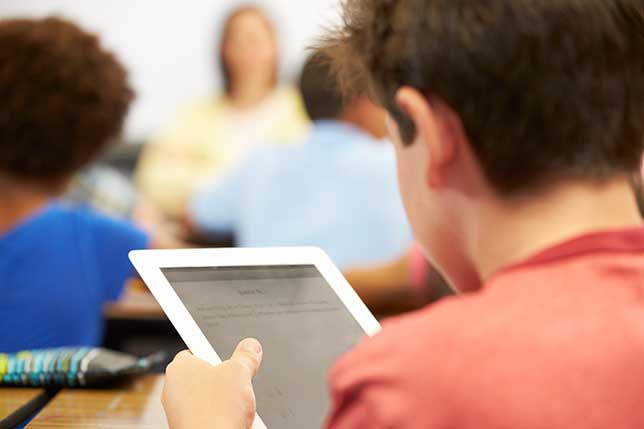Federal #GoOpen Campaign Gains Support from Districts, Tech Sector
40 school districts and 13 states now involved in the push to use open educational resources.

The United States Department of Education's push to have schools use open educational resources (OER) is building momentum.
"Since we launched #GoOpen on October 29th, we've seen real energy around this topic in K-12 education," said Andrew Marcinek, chief open education advisor at ED, who oversees the initiative.
#GoOpen kicked off with 10 school districts having pledged to replace at least one textbook with openly licensed digital resources for the 2016-2017 school year, and with six "ambassador districts" that are already using OER promising to mentoring these launch districts.
At a special #GoOpen Exchange event Feb. 26 in Washington, DC, the Education Department announced that 21 additional school districts have taken the #GoOpen pledge, and three more districts have become OER ambassadors — bringing the total number of actively involved districts to 40 in less than four months.
What's more, 13 states — Arizona, Georgia, Indiana, Maryland, Michigan, North Carolina, Oklahoma, Oregon, Rhode Island, Utah, Vermont, Virginia and Wisconsin — are launching statewide #GoOpen initiatives designed to support school districts as they expand their use of high-quality openly licensed materials.
"We're asking a really small ask: Replace one textbook with OER by next year," said ED's Marcinek in an interview. "We hope this builds proof points and exemplars for other districts to follow."
Why should schools consider using openly licensed digital materials instead of textbooks? "We owe it to our students to give them equitable access to high-quality instructional resources," he said. "How many science textbooks still list Pluto as a planet? How many history textbooks end with George W. Bush as president?"
One challenge to using OER in schools is the sheer number of disparate resources scattered across the Internet. To help make OER easier for teachers to find and share, the Education Department's Learning Registry is an open-source system that captures, aggregates and shares content across multiple learning platforms, allowing educators to search within any one of these platforms to find resources from thousands of sites.
At the #GoOpen Exchange, a number of companies announced their support for the Learning Registry.
Amazon Education, which sponsored the event, said it would provide infrastructure and developer support for the Learning Registry for at least two years. Edmodo uses the Learning Registry to help teachers find and share openly licensed instructional materials through its resource-sharing platform, Edmodo Spotlight — and now Spotlight will be integrated into the core Edmodo experience, the company said. And Follett will build an OER search tool, powered by the Learning Registry, into its Destiny library management software in time for the new school year this fall.
In addition, Microsoft will be releasing an app that helps teachers and students find openly licensed educational resources from within any learning management system built on the Learning Tools Interoperability (LTI) framework, such as Canvas and Moodle. The app is powered by an application programming interface from OpenEd.com that gives users an "effectiveness rating" on all OER resources. Enhanced features within Microsoft Office 365's Docs.com now enable users to create, discover, rate and share openly licensed materials.
Creative Commons, a nonprofit organization that grants open licenses allowing people to reuse content free of charge, said it's working with "multiple education platforms" to integrate Creative Commons licenses into their ed tech tools. And the Center for Digital Education, Inquiry Schools and the International Society for Technology in Education (ISTE) are teaming up to create a guide to choosing and using OER in schools, with checklists, strategies and case studies drawn from #GoOpen districts.
Marcinek said the goal of #GoOpen is not to "wipe every proprietary software program and textbook from use," but to get high-quality instructional materials into the hands of more students. He said the Education Department hopes to work collaboratively with publishers in reaching this goal.
"We're not looking to engage in a war with publishers," he said. "We're looking for them to be partners at the table with us and have conversations about what they can do to help. Our goal is to make sure that every student has access to high-quality resources for learning — whether that access is free or paid."
About the Author
Dennis Pierce is a freelance writer with 17 years of experience covering education and technology. He can be reached at [email protected].